Purdue Electric Racing: Flow With the Current
Purdue Electric Racing: Flow With the Current
In most motorsports, the roar of the engine draws people in. But for Purdue Electric Racing, it’s the high-pitched whine of electric motors powered by a 600-volt battery. This year’s Purdue Electric Racing team enjoyed another unique sound — victory. They successfully completed every event in their competition for the first time in their 12-year history.
“Every year we build a Formula-style car, powered by two 35-kilowatt electric motors in the rear wheels,” said Luca Rosu, mechanical engineering student and the president of Purdue Electric Racing. “It has instant torque. When you floor it, it just goes to the moon.”
It helps that the car weighs less than 500 pounds (even with the heavy battery), and a custom-designed carbon fiber aerodynamic package keeping the car glued to the ground.
“It’s like nothing else I’ve ever driven,” said Jaiveer Brar, the team’s chief mechanical engineer. “I’ve driven Porsches and Audis and other amazing cars, but this is totally different. You’re so low to the ground, you feel like you’re one with the car. The torque vectoring is amazing. I genuinely think there’s not going to be a better car I’ll ever drive in my life.”

From the Ground Up
Perhaps what’s most amazing about this speed machine? Just a year ago, not a single part of it existed — except in the imaginations of students.
“We design and build this car from scratch every year,” Rosu said. “We start designing in the summer and fall. Then in winter, we start manufacturing. Purdue has some really great resources that allow us to do that, like the Mechanical Engineering Machine Shop and the Bechtel Innovation Design Center.”
When he says manufacturing, he means everything: cutting and welding the steel frame, creating the molds for the carbon fiber, milling the wheels and the cockpit. Even the printed circuit boards for the electronics are Boilermaker creations. “95% of the things on the car are made on Purdue’s campus,” Rosu said. “Almost everything except the batteries and motors are designed and built by our team.”
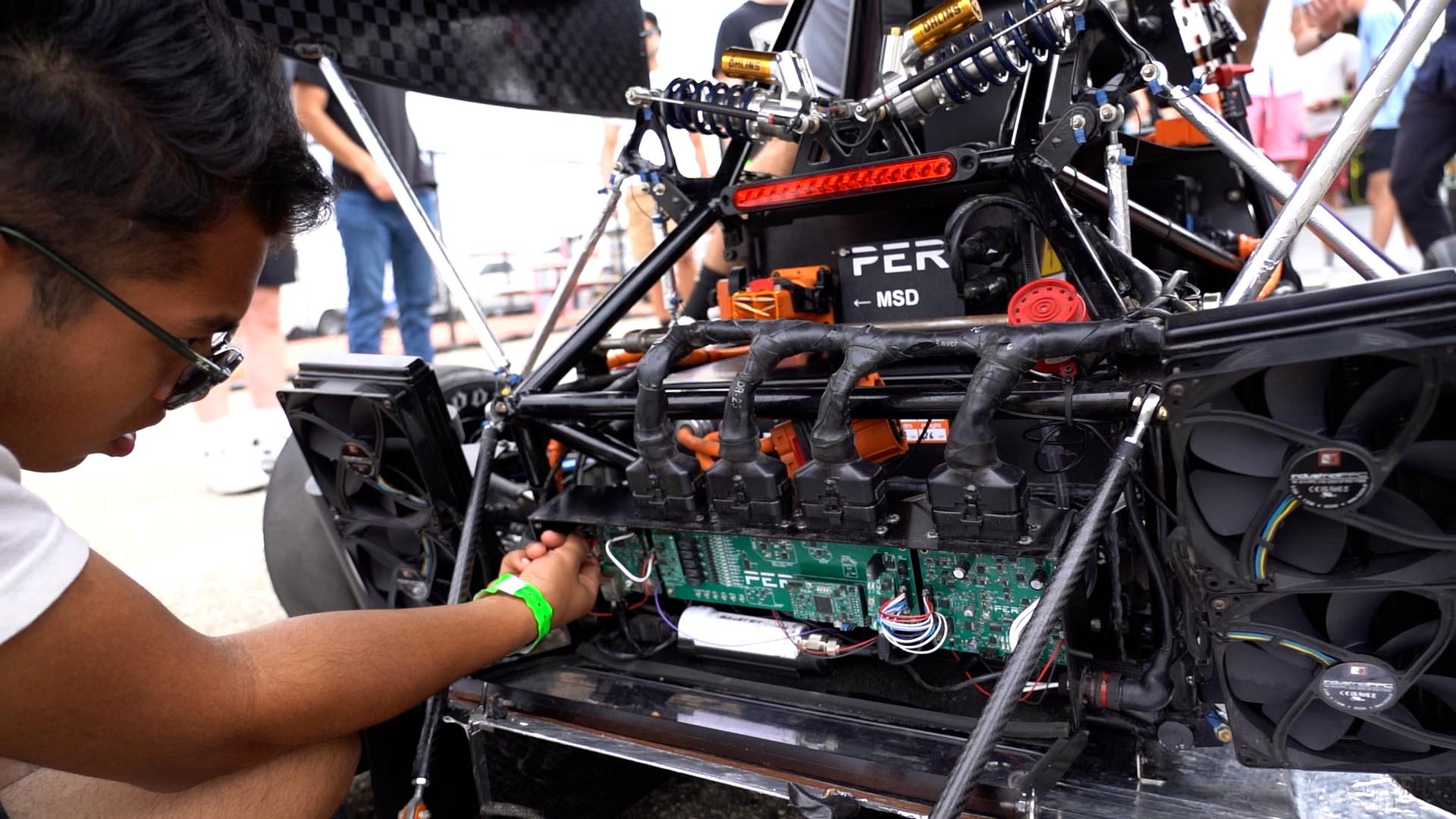
That 600-volt battery does present some challenges that other motorsports teams don’t have to deal with. “We’ve all seen horrific videos online of electric vehicles on fire,” Rosu said. “We have a very strict safety plan when working with these batteries. Our first objective is to avoid thermal runaway and catastrophic failure, which is why we chose to water-cool both our batteries and our motors. Our electronics team is also crucial; they even X-rayed our printed circuit boards here at Purdue to find the smallest of failures, which is something we’ve never done before.”
“I can’t think of a single day since we finished design freeze that I haven’t had my hands on this car,” said Brar. “It could be a holiday, a weekend, any time of the day or night — somebody will always be at the shop working on the car.”
Charge!
Once the car is completed, students take it on shakedown laps around the Purdue Grand Prix track. It’s all in preparation for their annual summer competition, part of the Collegiate Design Series held by the Society of Automotive Engineers (SAE).
Unfortunately, competition season hasn’t been kind to Purdue Electric Racing over the years. In 2018 the team traveled to Barrie, Ontario for an unofficial preseason event, finishing third. Filled with confidence, they pressed on to the SAE-sanctioned race in Lincoln, Nebraska, only to have their car stop running just a lap into the race. In 2023, the car didn’t even pass tech inspection — leaving dour team members sitting in lawn chairs, watching other teams compete on the track.
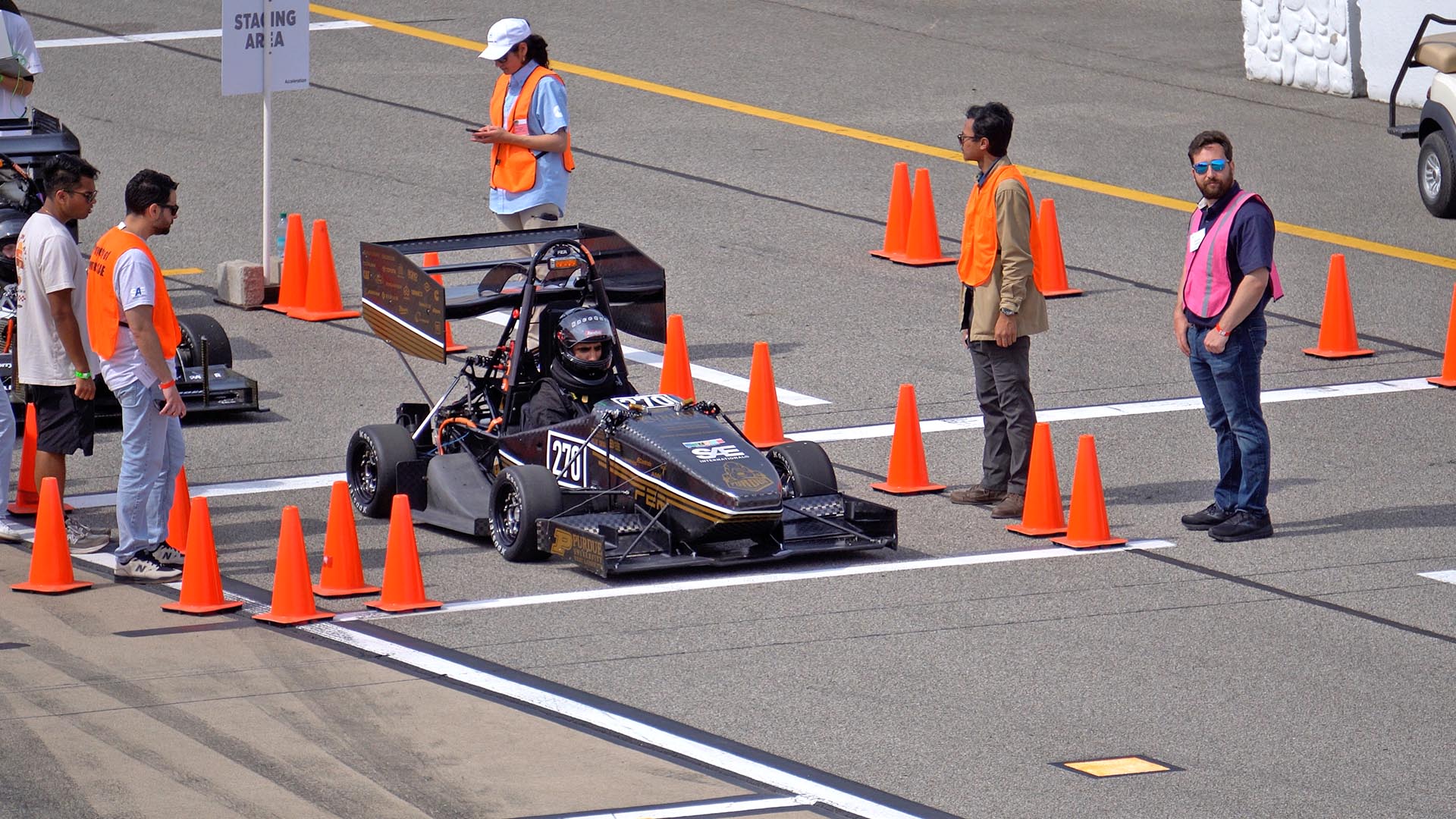
This year’s competition, hosted by Michigan International Speedway, would prove to be just as challenging. “SAE competitions are centered around design-build-test,” Rosu said. “The weekend begins with industry judges scrutinizing every aspect of your design, business viability, and cost. Then technical inspectors pore over the car itself, making sure it’s safe to compete; passing that is really half the battle. Only then can we do the fun part, the dynamic events: acceleration, skidpad, autocross, and endurance.”
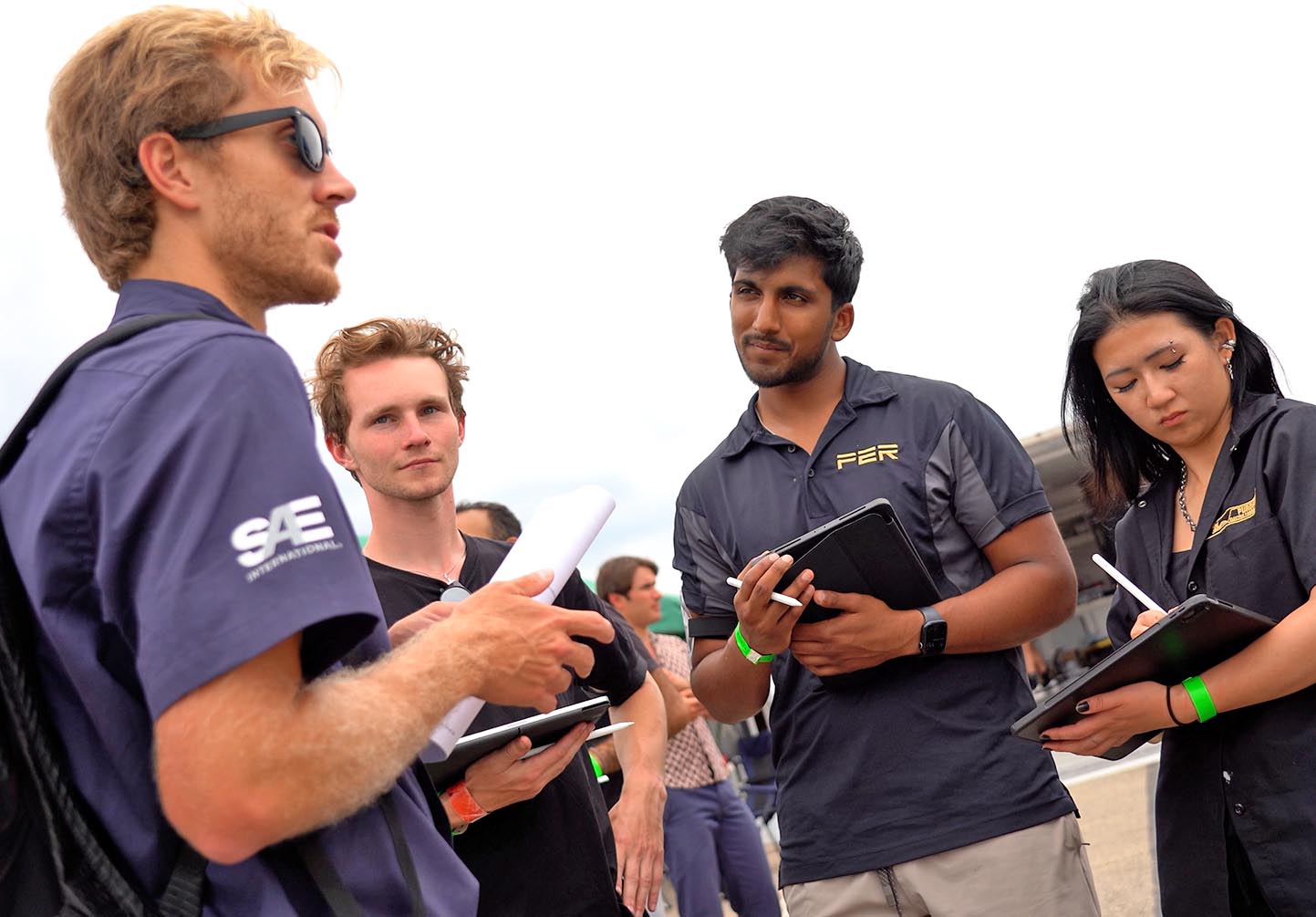
In 12 years of competing, Purdue Electric Racing had yet to fully complete this gauntlet — either failing technical inspection altogether, or not finishing one or more of the dynamic events. As the 2025 team started to watch these dominoes fall, a buzz began building in the paddock: could they do it?
One final hurdle remained: the endurance event. “Endurance is the scariest, but also the most fun event,” Rosu said. “We run the car for 22 laps around the track to make sure it can actually withstand being driven for an extended period of time. Even though it was 95 degrees that day, we believed in our water-cooling system.”
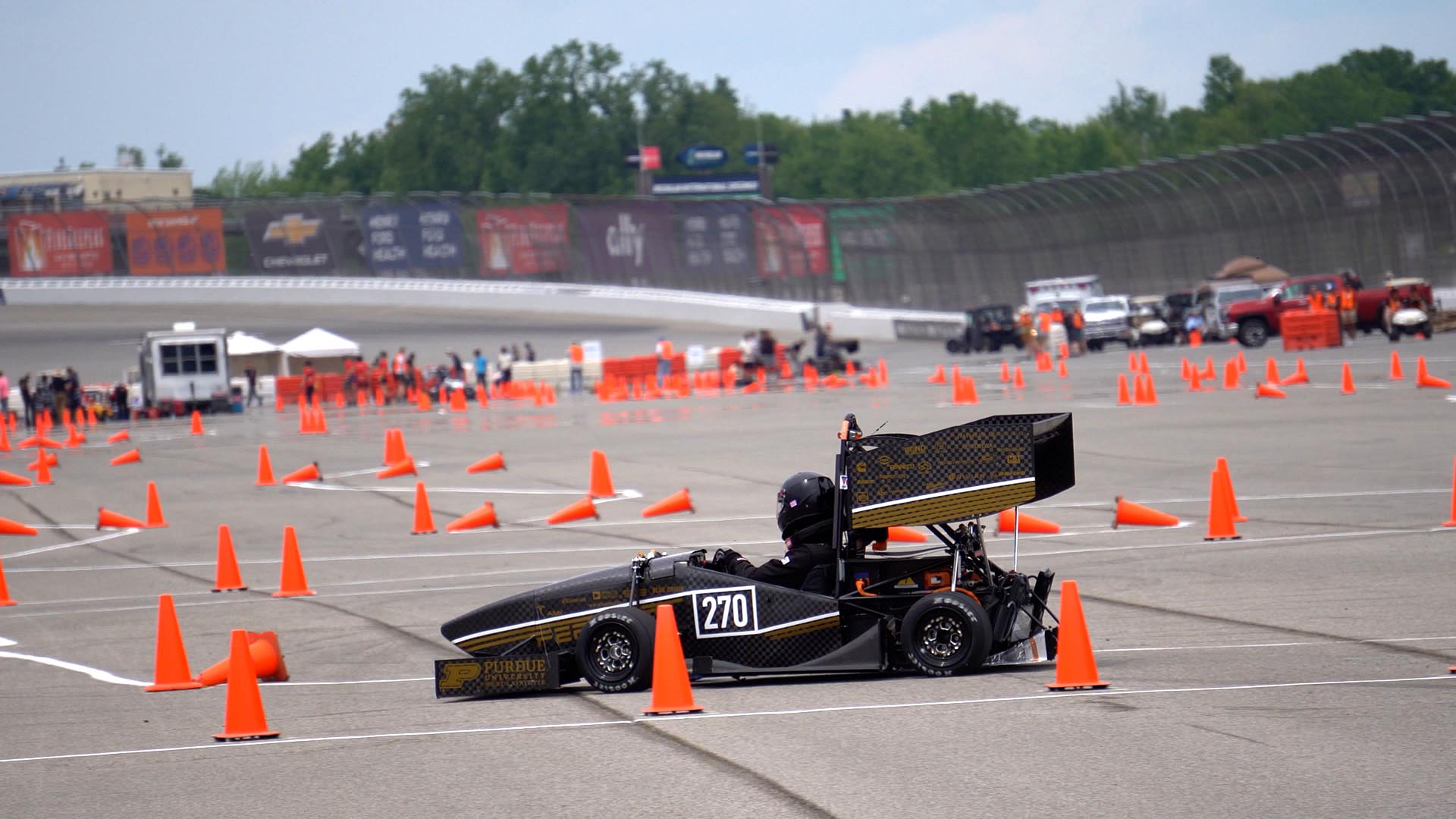
At the green flag, mechanical engineering student Tyler Cormier took the wheel. Behind chain link fences, the other members of Purdue Electric Racing could do nothing but cheer him on and count the laps.
At the halfway point, Tyler pulled into the pits to swap drivers, giving the stretch run to Luca Rosu. Rosu continued ticking off the laps with no evident difficulty, apart from hitting one stray traffic cone. The cheering grew every lap, as students realized they were about to finish endurance for the first time in history. The car zoomed by the stands on lap 21, with everyone in full voice.
And then: disaster. At lap 21 ½, Rosu spun out navigating a tight turn. Seconds passed as the car sat still. With no radio communication, students could only stand there with mouths open, speculating what happened, and questioning whether Rosu could get the car going again. In electric racing, course stewards are not allowed to touch a disabled car, to prevent potential shock hazards. It’s up to the driver to get the car going again.
And at the last possible moment — he did.
Dismay turned to joy. The loudest cheer came during the slowest lap, as Rosu limped the car passed the finish line and successfully completed the 22nd and final lap. Purdue Electric Racing had done it — they had completed every competition event for the first time in their history.
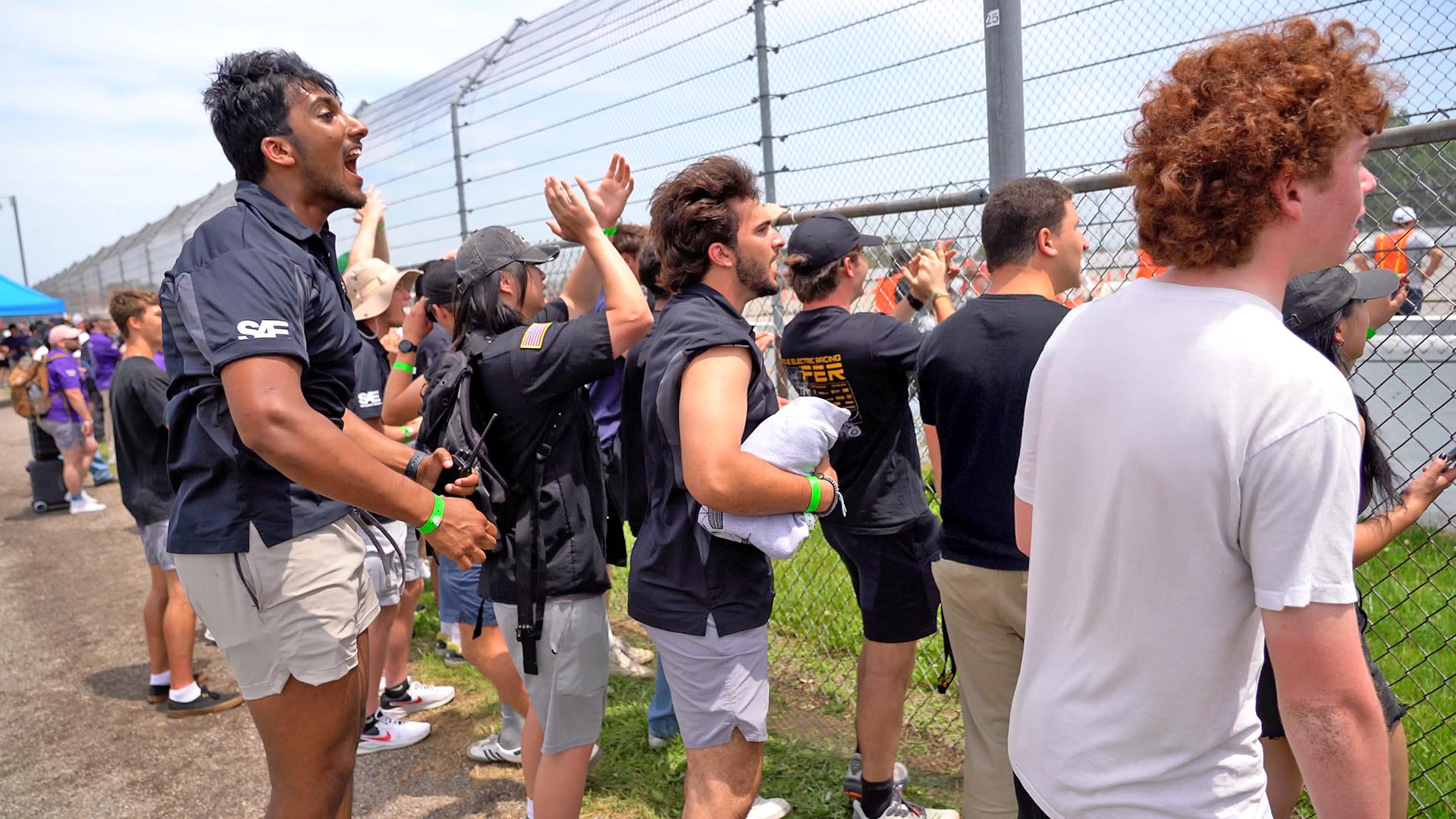
For Jaiveer Brar, it was an especially meaningful moment. “I was there two years ago when we didn’t pass tech inspection,” he said. “We still remember all the effort and hard work we had put in, only to come to nothing. It drove us this year. When we passed inspection this year, it was redemption. To have a car that can compete reliably, and finish every event for the first time in school history, is such a great feeling.”
Final results: Purdue finished 10th place overall, out of 85 university teams from across the United States, Canada, Singapore, and South Korea. “This is a bigger accomplishment than they realize,” said Nelson. “In SAE’s entire history, only 10% of Formula Electric teams have ever completed all events successfully. We’re thrilled that Purdue has now joined that elite group.”
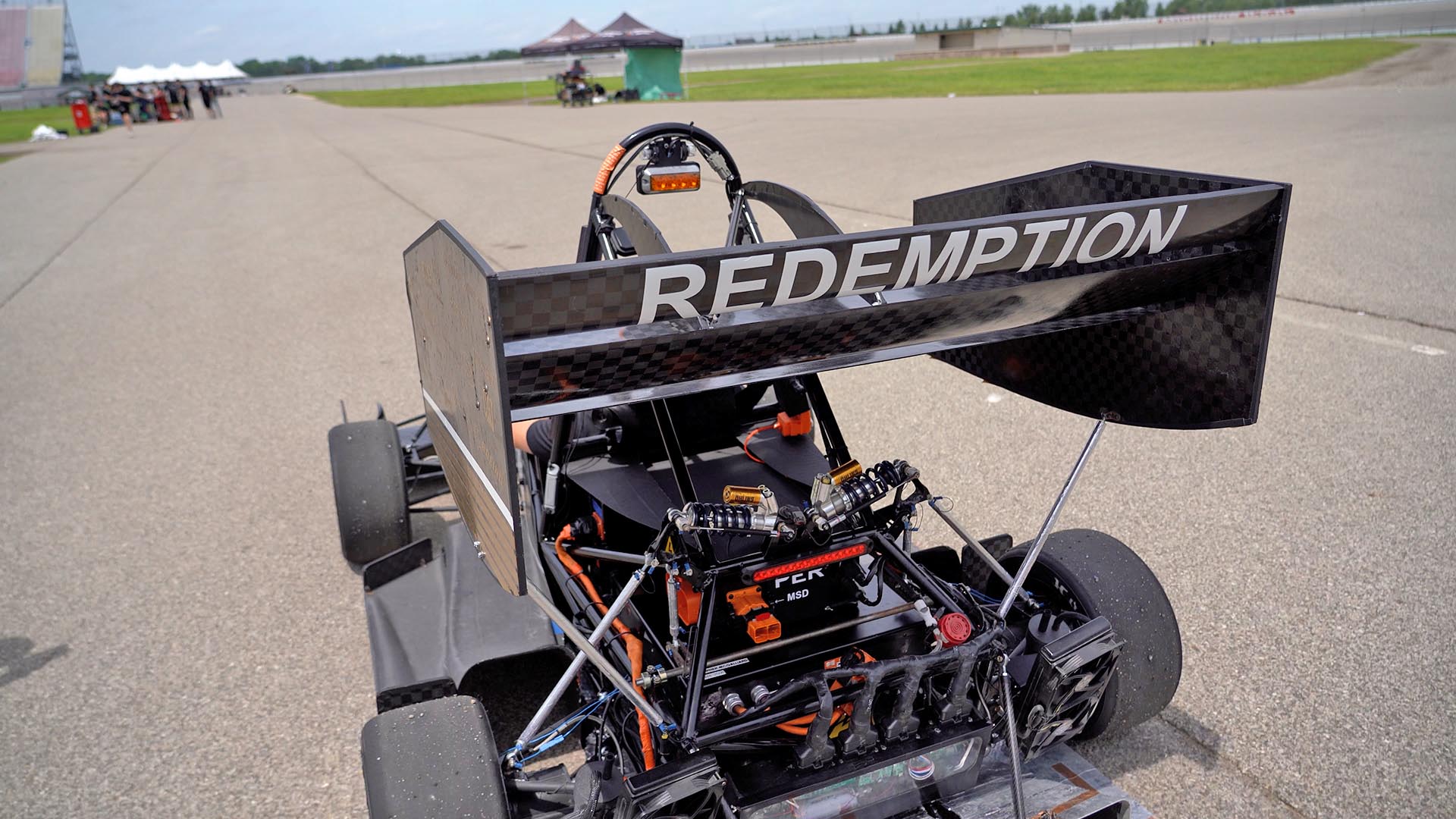
Teamwork Makes the Dream Work
Brar attributes this year’s success to the camaraderie of the team. “We all know where this team has been,” he said. “Being able to face a challenge like that together as a team, and bouncing back from it — that shows a lot more than just the success of building a car.”
“We’re one of the bigger teams on campus — we have about 150 active members,” Rosu said. “As a freshman, you can join this team not knowing anything, and we’ll teach you everything you need to know. We have room for mechanical engineers, industrial engineers, computer engineers, aerospace engineers, technicians, business and management. There’s a place for everyone at Purdue Electric Racing.”
“Motorsports is not just about automotive-related things,” Brar said. “It’s about learning teamwork and project management. Our members have gone on to all sorts of industries: aerospace, nautical, power electronics. I myself got internships at Tesla and Relativity Space because of it; they are literally interviewing students here at the track, because they know SAE students have the skills they want.”
“It’s remarkable what these students have accomplished,” Nelson said. “SAE teams are, in effect, small engineering firms, which students operate in addition to their normal classes and projects. Not only must they apply the technical skills they learn in the classroom to a very complex design problem, but it also requires them to manage a team of 50-75 people to meet a very tight schedule while managing a budget. I’ve never been prouder of the work they’ve accomplished.”
“If you look in our paddock, it’s like we’re a family,” Brar said. “We’ve spent so much time building these bonds as a team, and I think it really helps us create good designs. Engineering is never done in isolation; the better you know people, the better result you’re going to have on your project. And that’s why I joined. From the moment I started, it felt like I was part of a family. I’ve loved every minute of it.”
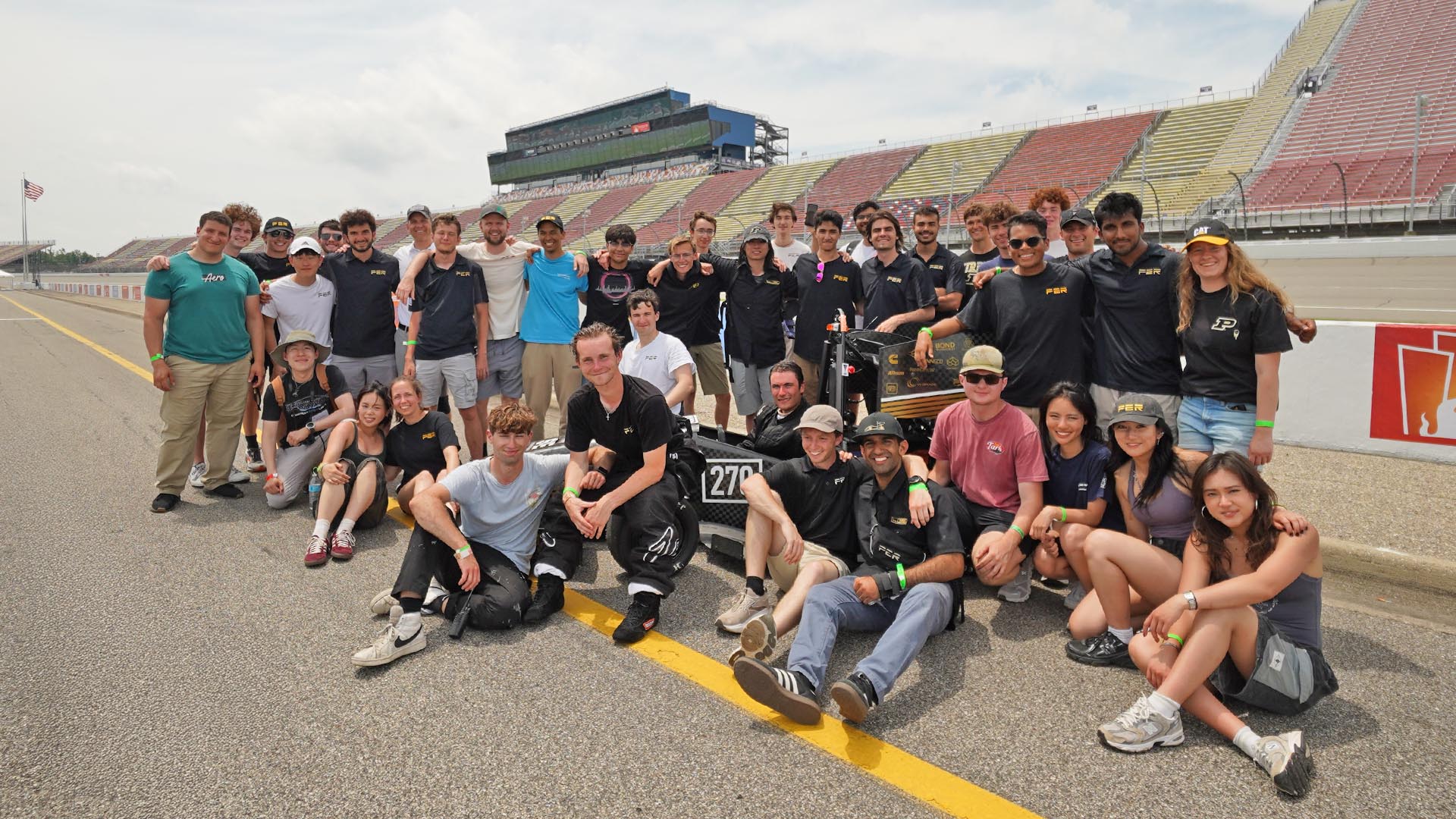
Website: https://www.purdueelectricracing.tech
Instagram: @purdue_electric_racing
Writer: Jared Pike, jaredpike@purdue.edu, 765-496-0374
